#robert vitalis
Text

Sebastian Vettel, 2010, Abu dhabi
First on podium after winning his first championship by 4 points ahead of Fernando Alonso in last race of the season.
#sebastian vettel#red bull racing#red bull f1#f1#f1 2010 abu dhabi#vitaly petrov#fernando alonso#robert kubica#mark webber#jenson button#lewis hamilton#felipe massa
56 notes
·
View notes
Text
[Calendario]
Mira, amor mío, esta no es la clase de cosas que para mí son fáciles de mostrar. En serio, preferiría dejarte ver más historias con miles de errores que esto, sin embargo, ya que existe una pequeña posibilidad de que sea de tu agrado, aquí lo tienes :D
Voy a hacer un calendario por mes con las ships que me gusten, ¡y aquí esta el primer mes!, y es de Holmes y Watson, obviamente c:
Hice dos versiones, en donde cambio solamente a Sherlock BBC (con su respectivo Watson), por el Holmes de RDJ (y su Watson) que, por si no se ha visto lo suficiente, odio con todo mi ser (?), pero aquí a mi amix @albastrusstuff le gusta esa versión, así que, porque la adoro, ahora esta en el calendario :3
Entonces, cariño, si te gusta lo suficiente, ten la confianza de descargar la cosa y marcarla/rayarla como más te plazca, que para eso es y yo estaré muy feliz de que para eso lo ocupes :D (manda ss). Por cierto, no sé si tumblr quita resolución a las imágenes (porque los fanarts que he visto son de muy buena calidad), pero de todas formas, te dejo link para que los descargues con toda la calidad posible dependiendo de cuál versión te guste más (o cuál odies menos, si decides usarlo XD).


Recuerda, esposa mía, que no soy diseñadora ni nada así :'D, si crees que esta feo, pues ya ni modos, no esperes nada mejor porque no le sé más u.u
Oh, aclaración sobre los números; las lunas que hay debajo corresponden a la vista que se dará en la CDMX en sus respectivos días a las 7pm, entonces, si vives en un lugar diferente, es probable que las lunas del calendario y las tuyas no coincidan del todo. Por lo demás, según esta página, será completamente así :3
Así que, ahí esta... 🥺🫣
#calendar sherlock holmes#sherlock holmes#john watson#granadaholmes#jeremybrett#david burke#ronald howard holmes#howard marion#ben kingsley#michael caine#yuko takeuchi#shihori kanjiya#nicholas rowe#alan cox#benedict cumberbatch#martin freeman#robert downey jr#jude law#vasily livanov#vitaly solomin#calendar 2024
4 notes
·
View notes
Text
every time i see johnny silverhand gifs on my dash i'm reminded of the fact i have vincent download the mf to his phone at some point in the timeline to then get him a body and now the man has a burger place. he's flippin burgers
#personal#idc if this shows up in the tag look at my funny canon boy#idc what people think i personally think it's the funniest thing to come out of the whole situation#it would happen somewhere after the broker chapter. vincent is chilling with lauren cato and thibault when they decide to do it#pick him up from beyond the blackwall like a mii character and put him in vincent's phone#and like a couple hours later it hits him what he's done and he's like Dear god. vitali is going to kill me#[he won't. but like. it's still funny]#the burger place thing spawned in my brain last summer because there's a place here in my town#called johnny's burgers. and i couldn't stop wheezing about it. so i made that canon#goes by the name robert again. vincent's oldest brother is named robert too and they hate each other so fucking much#anyway at this point it's canon in my canon but i might change that but right now i think it's too funny to just drop#not making this rebloggable though i don't trust anyone
8 notes
·
View notes
Note
I don’t know if you’ve posted about it yet but, something that always irks me is the specific female bodytype that’s in the MTMTE run. Almost every character introduced has it, and it’s the “implies boobs/implies belly button/curvy” body with no variation in anyway- there’s some exceptions but it’s pretty much just always That.
To give some context: that was an actual editorial demand. Roberts pitched that the female characters introduced in MTMTE should look otherwise identical to the male characters and be distinguished by pronouns only, and was told that as Hasbro was selling toys and wanted the aesthetic in line with what toys of their female characters would look like, they had to make them identifiably female according to that pattern.
They certainly allowed for individual exceptions to the 'look' later on (look at a couple of the female background extras in the Vis Vitalis crew, or even Lug in fact, who is explicitly based off Rewind as per JLaw)- they didn't get called up on giving a single character less of an hourglass body or anything. But the pitch Roberts had that his new female characters follow the same design patterns as the male characters as a whole was explicitly vetoed.
So yeah, it DOES suck, but on the plus side it's Hasbro that sucks in this case (as per Fucking Usual) and not necessarily the folks working on IDW1 at that time being shitty themselves or anything.
61 notes
·
View notes
Text
Cars and Planes and their sexualities
*Humanized*
Robert "Bobby" Swift - Gay
Darrell Cartrip - Gay
Bob Cutlass - Gay
Montgomery "Lightning" McQueen - Bisexual
Mater - Heterosexual
Calium "The Prince" Anthony Weathers- Pansexual, Demisexual
Sally Carrera - Heterosexual
Red - Asexual
Lizzy - Heterosexual
Ramone - Heterosexual
Flo - Heterosexual
Sarge - Gay
Filmore - Gay
Miguel Camino - Pansexual
Shu Todoroki - Gay
Carla Veloso - Lesbian
Nigel Gearsly - Gay, Demisexual
Max Schnell - Pansexual
Rip Clutchgoneski - Transgender, bisexual
Raoul Çaroul - Bisexual
Memo Rojas Jr. - Bisexual
Long Ge - Gay
Frosty - Asexual, Aromatic
Vitaly - Heterosexual
Pyotr Racinov - Asexual, Aromatic
Jeff Gorvette - Pansexual
Lewis Hamilton - Gay
Strip "The King" Weathers - Bisexual
Lynda "The Queen" Weathers - Genderfulid, Bisexual
Doc Hudson - Bisexual
Sheriff - Pansexual
Dusty Crophopper - Bisexual
Remington "Ripslinger" Tornado Baron - Pansexual
Skipper Riley - Pansexual
Ishani - Lesbian
Bulldog - Heterosexual
El Chupacarba - Heterosexual
Rochelle - Heterosexual
5 notes
·
View notes
Photo
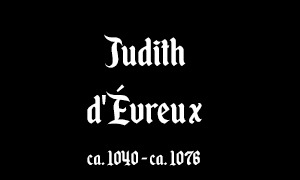





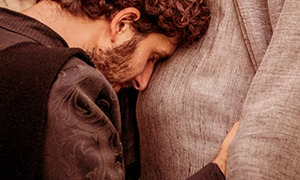
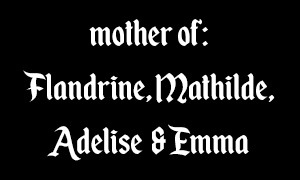
“A certain envoy, arriving from Calabria, announced that Abbot Robert of S. Eufemia had brought his sister Judith—a granddaughter of the duke of Normandy—from Normandy to Calabria so that Roger could marry her. Hearing this, Roger was elated because he had desired her for a long time, for she was beautiful and of excellent parentage. So Roger returned to Calabria as quickly as possible and rushed to meet the long-desired young woman.”
Goffredo Malaterra, The Deeds Of Count Roger Of Calabria And Sicily And Of His Brother Duke Robert Guiscard, p.95
Judith was born around 1040 in Normandy as the daughter of nobleman Guillaume d'Évreux, and his wife Hawise, daughter of wealthy baron Giroie, Lord of Échaffour, and previously widow of nobleman Robert I de Grandmesnil. Guillaume was the third and youngest son of Robert II, Archbishop of Rouen and Count of Évreux, and thus first cousin of Robert I of Normandy, father of William the Conqueror, Duke of Normandy.
We know that Judith spent her earlier life in the Benedictine convent of Saint Wandrille, together with her sister Emma (it’s unclear whether this girl was born out Hawise’s first marriage - thus making her an older half sister - or was Judith’s younger full sister) and under the guardianship of her half-brother Robert de Grandmesnil, Abbot of Saint-Evroul-sur-Ouche. According to English chronicler Orderic Vitalis, it is in this period that Judith caught the eye of Roger d'Hauteville, youngest son of a minor Norman nobleman, Trancred d’Hauteville.
Following a fight with Duke William, around 1060, Robert de Grandmesnil had to leave Normandy, seeking refuge in Southern Italy, where he became abbot of the newly founded Abbey of St. Euphemia in Calabria, with the blessing of fellow countryman, Robert Guiscard d’Hauteville.
Both Judith and Emma decided to follow their brother, leaving the convent and settling in Southern Italy. Once he was told Judith was in Calabria, Roger caught up with her and (according to the sources) married the young lady on the spot, right after meeting her, in San Martino in Val di Saline on Christmas 1061 (“Coming to the Saline Valley at S. Martino, he escorted the legitimately betrothed young woman to Mileto with a great gathering of musicians and celebrated holy matrimony there.” in Goffredo Malaterra, The Deeds Of Count Roger Of Calabria And Sicily And Of His Brother Duke Robert Guiscard, p.95). The once unappealing suitor (a cadet son from a relatively humble family) had, in the meantime, become an accomplished fighter from a now very promising and powerful family, the ideal husband. As for Judith’s sister, Emma, she would marry an unnamed comrade of her brother-in-law.
Right after marrying his sweetheart, Roger had to momentarily leave her, headed for Sicily, where he was busy chasing out the Muslims emirs which had ruled over the Island since the first half of X century. The youngest Hauteville returned to his wife shortly after, at the beginning of 1062, having conquered the area around Messina of Sicilian territory (“She rejoiced at his homecoming, having longed for him and having been so concerned for his well-being.” in Goffredo Malaterra, The Deeds etc, p.95)
What had propelled Roger to return to Calabria were some disagreements with his older brother, Robert Guiscard. Roger lamented to having obtained only the city of Mileto as part of his effort to conquer Southern Italy, despite his brother had promised him half of Calabria. Roger wanted to provide his wife of a dowry worthy of a lady born in an illustrious family, such as Judith had, but Robert Guiscard had proved to be quite stingy in terms of land distribution.
When put before the threat of an armed clash between the two, Robert was convinced to finally comply and keep his promise and divided Calabria’s territory with his younger brother. It was around summer 1062 and Roger was now free to return to Sicily, but, this time, he brought his wife with him (“He then returned to Sicily with three hundred men to wage war, taking with him his young wife, even though she was timid and resisted as much as she dared to.” in Goffredo Malaterra, The Deeds etc, p.102). The couple settled in Troina and the Hauteville benefited a lot from the closeness and support of such a devoted bride, especially since his stand in Sicily wasn’t all too steady. Taking advantage of the fact that, at some point, Roger had left his wife with a small garrison, the Greek citizens of Troina had attempted to attack the soldiers and kidnap Judith but to no avail.
Once he was informed of the failed coup and the fact that the Saracens intended to profit from the confusion and Roger’s absence, the Hauteville hastily returned to Troina, just before the enemy’s arrival. Troina suffered a 4 month siege, toughened by a shortage of provisions and unfriendly climate. Yet, “[…] they still remained strong in their hearts. Each one hid his suffering so as not to discourage the other, even trying to simulate a certain cheerfulness in his demeanor and words. The young countess managed to quench her thirst with water, but she did not know how to check her hunger, except with tears and sleep, since she had nothing else at her disposal.” (in Goffredo Malaterra, The Deeds etc, p.104). Around Christmas 1063, the besieged’s fate was overturned when Roger, leading part of his men, took advantage of the Saracen troop’s hangover (despite being forbidden by the Koran, drinking wine was the only way for the Saracens troops to withstand the cold) and relieved the siege.
The siege of Troina must have been some sort of turning point for Judith, strengthening her character. Once again, Roger left her all alone in Troina, this time going as far as Calabria and Apulia to replenish his lost supplies and gather more soldiers. “Although still just a young woman, the countess was so vigorous in her concern about maintaining the watch around the fortress that she circled it daily and wherever she saw that it could be made better, she assiduously saw to it that a new watch was established. Speaking softly and anxiously to everyone whom her absent lord had left behind with her, she urged them to consider what needed to be protected, promising that they would be rewarded upon the count’s return. She made certain that they never forgot the danger they had experienced lest they find themselves in the same situation again through their own carelessness.” (in Goffredo Malaterra, The Deeds etc, p.106).
In the meantime, the conquest of Sicily went on and, after the military victories at Cerami (1063), Misilmeri (1068) and the conquest of Palermo (1072), the invasion of the Island was quite secured, although still not complete (the last Muslim stronghold, Noto, would capitulate only in 1098). In Palermo, Robert Guiscard invested his brother Roger Count of Sicily. This, nonetheless, didn’t mean that Roger was now the island’s only master since Robert Guiscard, as its suzerain, controlled half of it.
Nothing else is known about Judith, first Countess consort of Sicily, except that she died young, around 1076, while her husband was away. Although sources don’t talk about it, it must have been a heavy blow for her husband since he loved her so dearly.
She would give birth to four daughters: Flandrine, Mathilde, Adelise and Emma, all born between 1062-1063 and all destined to noble matches. Some sources talk about a son too, Jordan, however it’s quite sure he was an illegitimate son born prior the marriage of Roger and Judith (“Although Jordan was the product of a concubine; he was still a man of great strength in body and heart who longed for the glory that came from accomplishing great things.” in Goffredo Malaterra, The Deeds etc, p.165). Around 1081, Jordan would attempt a coup against his father, while he was away from Sicily and had left his son as regent. Once the rebellion failed, Jordan was surprisingly pardoned by his father, and remained faithful to him until the end.
Without a male legitimate heir, Roger Count of Sicily would marry two other times: to Eremburge de Mortain and, finally, to Adelasia Del Vasto.
Sources
Curtis Edmund, Roger of Sicily and the Normans in Lower Italy, 1016-1154, p. 100
Malaterra Goffredo, The Deeds Of Count Roger Of Calabria And Sicily And Of His Brother Duke Robert Guiscard, p.95-106; 165.
Norwich John Julius, The Normans in the South 1016–1130, p. 173- 183; 316
Orderici Vitalis, Historiæ ecclesiasticæ, liber tertius, p. 91-92
Tocco Francesco Paolo, RUGGERO I, conte di Sicilia e Calabria, in Dizionario Biografico degli Italiani, vol. 89
#historicwomendaily#history#women#women in history#historical women#Judith d'Évreux#ruggero i#House of Hauteville#norman swabian sicily#people of sicily#women of sicily#myedit#historyedit
86 notes
·
View notes
Text
Last Line WIP Game
Thank you @nothoughtsjustmeds for the tag! Mafia Frankie?! Count me in!
Here’s mine from Formula 101 (figured it's better to include the whole segment cuz Read More wouldn't exactly make sense lol)
FOURTEEN BIGGEST MOMENTS AT THE 2022 DRIVE AWARDS
By Pippa Vitalis, Bubblefeed
Updated 19 December 2022
Ricky Hauk wins Rookie of the Year Award
Robert McCall’s selfie with Eggsy Unwin, Oddball and Ben Miller
Marcus Moreno dedicates his Racing Driver of the Year Award to his mother, Anita Moreno
Pero Tovar’s priceless facial expressions the whole night long
Javi Gutierrez calls his teammate Oddball “Rarita” on the red carpet
Read More
NP Tagging: @kyberblade @writeforfandoms @prolix-yuy @swiftispunk @psychedelic-ink
6 notes
·
View notes
Text
Acidosi Metabolica

L'ACIDOSI METABOLICA COSE'

PIÙ DI UNO SQUILIBRIO ACIDO BASE
(TRATTO DA : biohealth.it)
L’acidosi metabolica è dovuta ad una riduzione della concentrazione dei bicarbonatici nel sangue.
Questo riduce il valore del pH sotto il 7,35, con possibili conseguenze per l’organismo.
- Eccessivo accumulo di un acido non volatile (gli acidi volatili, come l'anidride carbonica, sono infatti eliminati dai polmoni).
- Perdita di alcali non volatili, come il bicarbonato.
- Ridotta capacità dei reni di eliminare gli acidi.
Un'acidosi metabolica è caratterizzata da una bassa concentrazione di bicarbonato (acidosi metabolica) e aumento del gap ani-onico sarà molto probabilmente provocata da un accumulo di acidi, prodotti dall'organismo o immessi dall'esterno.
Se invece la causa dell'acidosi è proprio l'eccessiva perdita di bicarbonato, quest'ultimo sarà sostituito dal cloruro e il gap ani-onico risulterà quindi normale.
Date queste
premesse è possibile distinguere due tipi di acidosi metabolica:
1- A gap ani-onico normale (da perdita di bicarbonati):
- perdita di origine renale: malattia renale cronica avanzata, acidosi tubulare renale;
- perdita extrarenale (da organi diversi dal rene): diarrea prolungata.
2- A gap ani-onico aumentato (da accumulo di acidi):
da acidi endogeni(prodotti dall'organismo): chetoacidosi diabetica, (acidosi lattica), digiuno prolungato, acido piroglutammico;
da acidi esogeni (introdotti dall'esterno): chetoacidosi alcolica, intossicazioni da glicole etilenico, metanolo salicilati.
(https://it.wikipedia.org/wiki/Acidosi_metabolica).
Inoltre, lo stile di vita odierno ci porta a produrre e introdurre con l’alimentazione acidi in eccesso (carne, pesce, uova, formaggi, bevande gassate) mentre sono sempre più carenti le valenze alcaline (frutta e verdura in particolare) cui si aggiungono fumo, stress psico-fisico e farmaci, fattori che possono alterare il normale equilibrio acido-base.
Nel momento
in cui il corpo accusa un aumento di acidi mette in atto diverse strategie per
riequilibrare il valore del sangue (in primis):
- Elimina attraverso le urine l’eccesso di acidi;
- Utilizza i citrati, sostanze che che noi ingeriamo (dovremmo ingerire) mangiando frutta e verdura per tamponare gli acidi in eccesso (i citrati sono alcalini); come risultato (misurabile e quindi utilizzabile per valutare lo stato di acidosi o meno di un soggetto) si nota un calo dei citrati urinari (ipocitraturia) condizione che, oltre ad essere un campanello di allarme, predispone alla formazione di calcoli renali.
- Accumula acidi in zone del corpo non vitali: ecco che si manifestano la gotta,le artriti;
- Preleva materiale alcalino dalle scorte corporee, le ossa, al fine di ripristinare il corretto equilibrio acido base, predisponendo l’organismo alle patologie legate alla perdita di massa ossea (osteopenia, osteoporosi)
(TRATTO DA : biohealth.it)

(Tratto da : http://www.mednat.org/bioelettr/acidosi.htm)
L'eccesso di acidi e' la causa principale e fondamentale di TUTTE le malattie, così afferma anche il dott. Robert Young di San Diego CAL., USA.
La "nuova biologia" come la chiama il dott. R. Yuong, modifica totalmente il punto di vista della medicina ufficiale e la falsa idea Pasteuriana che nel diciottesimo secolo affermò che le malattie sono generate dai germi, quando invadono dall'esterno il ns. corpo.
Young afferma che: quando i liquidi del corpo sono alcalini, i "germi" non hanno nessun potere, ne' appigli e quindi il corpo ha la proprietà di auto mantenersi sano e/o guarire dalle sue malattie.
Egli fa una
semplice similitudine: immaginate una vasca di pesci immersi in acqua, se
l'acqua è salubre, pulita, i pesci sopravvivono; se l'acqua è malsana i pesci
muoiono.
Nello stesso
modo le cellule, che vengono paragonate ai pesci della vasca che devono vivere
in acqua, (Terreno), pulita, anche le cellule, se vivono in liquidi alcalini,
cioè salubri, esse funzionano regolarmente, nutrendosi ed eliminando le
tossine, creando anche le sostanze necessarie ed apportando ciò che necessita
all'organismo per mantenersi sano.
Quindi la
salute la si mantiene o la si recupera SOLO se manteniamo puliti ed alcalini i
nostri liquidi, il Terreno, la matrice, nei quali le cellule galleggiano e vivono
in buona salute.
Un altro semplice esempio può essere :
Se in una città i rifiuti urbani non vengono smaltiti in fretta, ma vengono accumulati nelle strade, cosa succede in breve tempo ?...arrivano i topi, vi sono le esalazioni che i rifiuti emanano, l'aria diviene irrespirabile e i liquami che essi producono invadono le strade...
I topi
possono essere paragonati ai “germi” ed i rifiuti sono i rifiuti acidi
accumulati nel nostro organismo, nel terreno i nostri liquidi: se i topi, cioè
i "germi" non trovano un ambiente favorevole alla loro vita nel
terreno, i liquidi, semplicemente se ne vanno, così come sono arrivati, senza
produrre danno.
Eliminare la spazzatura dal “terreno” (i rifiuti acidi del corpo dai liquidi) è fondamentale per restare in buona salute, o guarire dalle malattie: in questo modo germi, cioè i topi, non trovano un ambiente favorevole, e semplicemente "se ne vanno" così come sono venuti.
(Tratto da : http://www.mednat.org/bioelettr/acidosi.htm)
In campo medico per acidosi, si intende un aumento dell'acidità, ovvero un incremento della concentrazione di ioni idrogeno
Si definisce acidosi quando il pH arterioso(sangue) scende al di sotto del valore di 7.35
L'acidosi e' una condizione patologica dell’organismo in cui siano prodotte o introdotte in misura superiore alla norma sostanze acide, oppure siano sottratte sostanze alcaline, così che il pH del sangue, normalmente alcalino (pH 7,35), ed i liquidi del corpo (vedi: acqua del corpo) perdono il giusto pH = 7,35 - 7,4 - vedi Bioelettronica).
Tendendo all'acidità più meno intensa, anche a livello cellulare per l'alterazione della pompa protonica, ed il processo di acidosi inizia sempre ed in primis nel tubo digerente (intestino).
Con l'acidosi metabolica
NON si deve MAI bere acqua con pH inferiore di 7.35
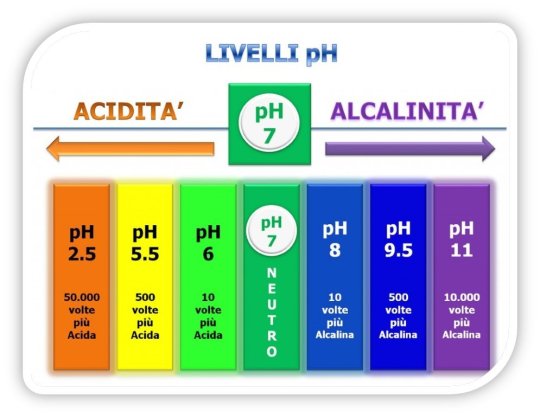
L’acidosi metabolica
si verifica quando nel sangue aumenta la quantità di acidi, il che porta a una
diminuzione del valore di pH,
rispetto a giusti valori che sono di pH 7,35.
In condizioni fisiologiche, l’acidosi del sangue si verifica ad esempio, in occasione di un intenso sforzo muscolare, che porta all'accumulo di acido lattico nei muscoli; tale acido viene in parte trasformato mediante una reazione di ossidazione all'interno del tessuto muscolare, ma una parte passa nel sangue, causandone l'acidificazione.
Nel processo di acidificazione, si presenta sempre parallelamente una diminuzione dell’ossigeno circolante e di assimilazione nell’organismo.
Un'altra causa è rappresentata dall'ingestione di una quantità eccessiva di cibi acidificanti (zuccheri semplici, proteine animali, latticini, carni, grassi, farine raffinate o una combinazione di questi).
Altre cause
possono essere anche l’assunzione dei determinati farmaci.
Un pH acido
può essere dato da: alimenti che creano fermentazioni e/o
putrefazioni che
determinano acidosi digestiva nell’intestino specie quello tenue, stress emozionale, carico tossico e/o immuno reazioni o altri processi che privano le cellule di ossigeno e altri nutrienti. - vedi: Stress ossidativo
Il corpo cerca di compensare il pH acido utilizzando i minerali alcalini (Bicarbonati) che ha a disposizione.
Se la dieta
non contiene sufficienti minerali alcalini utili alla compensazione, si
verificherà una formazione di acido nelle cellule, nel citoplasma.
L'acidosi è
uno stato pericoloso per il nostro organismo: perché’
crea alterazione delle funzioni cellulari, intossicazione, stanchezza, stati infiammatori nei tessuti, irritabilità-eccitazione del sistema nervoso, aumento delle tossine circolanti nelle cellule e depositate nei tessuti e quindi dei radicali liberi, indebolimento del sistema immunitario, intossicazione del fegato e del sistema linfatico, ecc.
La cellula umana “sana”, lavora bene solo quando ha molto ossigeno molecolare e un pH leggermente alcalino.
La cellula malata (stress ossidativo) o quella cancerogena ha un pH acido e manca di ossigeno.
Le cellule cancerogene non possono sopravvivere in un ambiente ricco di ossigeno.
Più alto sarà il valore pH, più alcalino e ricco di ossigeno sono i liquidi di cui e’ composto un organismo vivente.
Il cancro e tutte le malattie odiano l’ossigeno e l’equilibrio del pH.
Quest’ultimo è di fondamentale importanza per la salute.
Secondo l'insegnamento di H.H. Reckeweg, fondatore della Omo-tossicologia, tutti quei processi, quadri clinici e manifestazioni che noi chiamiamo malattie sono espressione della lotta dell'organismo contro tossine per renderle innocue e poi espellerle.
Percio’
periodicamente, durante i periodi in cui la vitalità è elevata, l'organismo
tenta di correggere questa condizione attraverso delle acute crisi di
guarigione (le cosiddette "malattie").
Se un soggetto non migliora le sue abitudini di vita, dopo qualche anno verrà a crearsi una malattia cronica in grado di durare negli anni.
alla base di tale malattia troviamo sempre un grande accumulo di tossine.

L'organismo
può vincere o perdere questa battaglia, in ogni caso quei processi che noi chiamiamo
malattie non sono altro che utili funzioni biologiche, tendenti alla difesa
contro i veleni, finalizzate cioè alla disintossicazione naturale.
L'organismo
cerca comunque e sempre di compensare i danni che ha subito e che non è
riuscito nel frattempo ad eliminare.
L'acidosi precede e provoca le malattie
È ormai
riconosciuto da molte autorità, il fatto che molte malattie si sviluppano a
causa di una riduzione delle funzioni organiche ed un abbassamento della
resistenza dell'organismo a causa di una condizione di acidosi cronica.
A questo
riguardo il Dr. George W. Crile, direttore della Clinica Crile in
Cleveland, uno dei più famosi chirurgi del mondo, così si esprime:
"Non esiste la morte naturale.Tutti i casi così definiti sono soltanto il punto finale di una progressiva acidificazione dell'organismo.".
Anche un
corpo originariamente sano alla fine soccombe sotto le malattie fisiche quando
la sua stessa produzione di acido si accumula ad un punto tale in cui non può
più opporvi resistenza e, conseguentemente, diventa suscettibile ai germi, al
freddo, alla fatica o all'esaurimento nervoso.
Quando il livello di tossine nel corpo raggiunge il massimo tollerabile l'organismo inizia un'azione di pulizia che può prendere varie forme, tra cui:
- Diarrea
- mal di testa
- raffreddore
- eruzioni della pelle
- ascesso
- foruncoli
- reumatismo
- infiammazione degli occhi o altri organi,
- catarro
- sensazione di freddo
- febbre e tutta la complessa casistica di sintomi che viene riconosciuta con i nomi delle varie malattie.
tutte queste problematiche hanno un'origine comune: un accumulo di rifiuti acidi nel corpo.
Ogni giorno che passa il cibo e le bevande che utilizziamo stanno diventando sempre più "produttrici di acido", specialmente i pasti veloci come quelli offerti dai fast-food e gli alimenti precotti.
Anche i
dolci ed i dessert formano acido così come il caffè, il vino e la birra.
Un altro
elemento che crea acidità è un'alimentazione eccessiva.
Va notato che anche coloro che seguono una dieta vegetariana possono ritrovarsi con un alto livello di acidità se consumano troppi cereali.
Le preoccupazioni, l'ansia, la paura e gli altri stress sono altri fattori in grado di produrre acidità organica, e così pure le sostanze inquinanti e le eventuali tossine presenti nell'ambiente in cui viviamo.
Bisogna quindi innanzi tutto correggere l'alimentazione con una dieta più equilibrata.
Ecco una tabella di sostanze acidificanti, neutre o de-acidificanti che vi può aiutare a correggere l'alimentazione.
Non occorre (anzi non si deve) eliminare tutte le sostanze acidificanti della prima colonna, ma solo equilibrarle con le altre, eliminando le più gravi (in neretto):
Alimenti
acidificanti
Alimenti
neutri
Alimenti
alcalinizzanti
Alcool
Albicocche
(fresca e secca)
Acqua pura
non gasata
Aragosta
(e crostacei in genere)
Ananas
Aglio
Avena
Arancie
Alghe
marine
Birra
Banane
Anguria
Burro
Cavolfiore
Broccoli
Cacao,
cioccolato
Carote
Cannella
Carrube
Ciliegie
Castagna
Caseina
(formaggi, ecc.)
Cipolle
Cavolo verza
e rapa
Confetture
con zucch. bianco
Datteri
Fagiolino
Cozze,
vongole
Fagioli
(freschi e secchi) e fave
Iogurt
magro
Crusca
d'avena
Fichi
Indivia
Dolcificanti
artificiali
Formaggio
di capra
Lamponi
Formaggi
Fragole
Lenticchie
Fritti
Grano,
pane e pasta integr.
Limone
limetta
Gelati
cremosi
Grano
saraceno
Mandarini
Lardo
Latte
(vaccino e caprino) intero
Mango
Liquori
Lattuga
Melassa
Maiale
Limoni
Melone
Manzo,
vitello, ecc.
Read the full article
2 notes
·
View notes
Text
The epithet "Curthose" had its origins in the Norman French word courtheuse 'short stockings' and was apparently derived from a nickname given to Robert by his father; the chroniclers William of Malmesbury and Orderic Vitalis reported that William the Conqueror had derisively called Robert brevis-ocrea ("short boot").[1]
art thou nasty, robert booty shorts?
2 notes
·
View notes
Photo

[BERLIN 2023] SÉLECTION
La Berlinale débute ce jeudi et se déroulera jusqu’au dimanche 26 février. Rendez-vous à partir de jeudi sur notre page dédiée pour suivre en direct notre couverture de cette édition !
COMPÉTITION
Films datés :
08/03 : ‘Music’ d’Angela Schanelec
12/04 : ‘Suzume’ de Makoto Shinkai
19/04 : ‘Sur l’Adamant’ de Nicolas Philibert
03/05 : ‘Disco Boy’ de Giacomo Abbruzzese
06/09 : ‘Le Ciel Rouge’ de Christian Petzold
06/09 : ‘Le Grand Chariot’ de Phillipe Garrel
11/10 : ‘Mal Viver’ de João Canijo
13/12 : ‘The Survival of Kindness’ de Rolf de Heer
13/12 : ‘Nos vies d’avant’ de Celine Song
14/02/24 : ‘20 000 espèces d’abeilles’ d’Estibaliz Urresola Solaguren
Films non datés :
‘Someday We’ll Tell Each Other Everything’ d’Emily Atef
‘Manodrome’ de John Trengove
‘Ingeborg Bachmann – Journey into the Desert’ de Margarethe Von Trotta
‘BlackBerry’ de Matt Johnson
‘Till the End of the Night’ de Christoph Hochhäusler
‘The Shadowless Tower’ de Zhang Lu
‘Limbo’ d’Ivan Sen
‘Art College 1994’ de Liu Jian
‘Tótem’ de Lila Avilés
ENCOUNTERS
Films datés :
11/10 : ‘Viver Mal’ de João Canijo
17/04/24 : ‘White Plastic Sky’ de Tibor Bánóczki et Sarolta Szabó
Films non datés :
‘In Water’ de Hong Sang-soo
‘Orlando, ma biographie politique’ de Paul B. Preciado
‘The Adults’ de Dustin Guy Defa
‘The Echo’ de Tatiana Huezo
‘The Klezmer Project’ de Leandro Koch et Paloma Schachmann
‘Here’ de Bas Devos
‘In the Blind Spot’ d’Ayse Polat
‘The Cage Is Looking for a Bird’ de Malinka Mustaeva
‘Mon pire ennemi’ de Mehran Tamadon
‘Family Time’ de Tia Kuovo
‘The Walls of Bergamo’ de Stefano Savona
‘Samsara’ de Lois Patiño
‘Eastern Front’ de Vitaly Mansky et Yevhen Titarenko
‘Absence’ de Wu Lang
PANORAMA
Films datés :
28/06 : ‘Passages’ d’Ira Sachs
28/06 : ‘La Sirène’ de Spidah Farsi
05/07 : ‘Au cimetière de la pellicule’ de Thierno Souleymane Diallo
16/08 : ‘La Bête dans la jungle’ de Patric Chiha
23/08 : ‘Reality’ de Tina Satter
20/09 : ‘Silver Haze’ de Sacha Polak (DVD)
18/10 : ‘A l’intérieur’ de Vasilis Katsoupis
25/10 : ‘Sisi & I’ de Frauke Finsterwalder
29/11 : ‘Kokomo City’ de D. Smith
Films non datés :
‘Perpetrator’ de Jennifer Reeder
‘Adversaire’ de Milad Alami
‘After’ d’Anthony Lapia
‘All the Colours of the World Are Between Black and White’ de Babatunde Apalowo
‘Al Murhagoon’ d’Amr Gamal
‘Ambush’ de Chhatrapal Ninawe
‘And, Towards Happy Alleys’ de Sreemoyee Singh
‘El Castillo’ de Martin Benchimoi
‘Do You Love Me?’ de Tonia Noyabrova
‘Drifter’ de Hannes Hirsch
‘The Eternal Memory’ de Maite Alberdi
‘Femme’ de Sam H. Freeman et Ng Choon Pin
‘Green Night’ de Han Shuai
‘Hello Darkness’ de Soda Jerk
‘Heroic’ de David Zonana
‘Joan Baez I Am a Noise’ de Karen O’Connor, Miri Navasky et Maeve O’Boyle
‘Matria’ d’Álvaro Gago
‘Property’ de Daniel Bandeira
‘Sages-femmes’ de Léa Fehner
‘Sira’ d’Apolline Traoré
‘Stams’ de Bernhard Braunstein
‘Stille Liv’ de Malene Choi
‘Transfarina’ de Joris Lachaise
‘The Teachers’ de Loungeİlker Çatak
‘Under the Sky of Damascus’ de Heba Khaled, Talal Derki et Ali Wajeeh
BERLIN SPECIALS
Films datés :
31/03 : ‘Kill Bok-soon’ de Byun Sung-hyun (Netflix)
07/04 : ‘Du tennis à la prison : l’histoire de Boris Becker Pt. 1’ d’Alex Gibney (AppleTV+)
07/06 : ‘Dernière nuit à Milan’ d’Andrea Di Stefano
26/07 : ‘La Main’ de Danny Philippou et Michael Philippou
Films non datés :
‘Infinity Pool’ de Brandon Cronenberg
‘Laggiù qualcuno mi ama’ de Mario Martone
‘She Came to Me’ de Rebecca Miller
‘Superpower’ de Sean Penn et Aaron Kaufman
‘Golda’ de Guy Nattiv
‘Kiss the Future’ de Nenad Cicin-Sain
‘Loriots große Trickfilmrevue’ de Peter Geyer et Loriot
‘#Manhole’ de Kazuyoshi Kumakiri
‘Ming On’ de Soi Cheang
‘Seneca’ de Robert Schwentke
‘Sonne und Beton’ de David Wnendt
‘Der vermessene Mensch’ de Lars Kraume
A&B
6 notes
·
View notes
Text
Renault R30 de Kubica na mostra 50 anos GP no Brasil
Renault R30 de Kubica na mostra 50 anos GP no Brasil
Monoposto foi usado pela Renault na temporada 2010 com Kubica e Petrov. R30 pertence ao acervo da Renault do Brasil
A Renault está presente na exposição “50 anos de GP no Brasil”, com o R30, carro que foi usado em 2010 pela escuderia da Renault na Fórmula 1 à época e que faz parte do acervo histórico da Renault do Brasil. O veículo, que foi pilotado por Robert Kubica e Vitaly Petrov, é uma das…

View On WordPress
2 notes
·
View notes
Text
The Charter Evidence: Ermentrude
“The earliest evidence relates to the countess Ermentrude. Orderic Vitalis condemned Earl Hugh as a ‘slave to gluttony . . . given over to carnal lusts’. Ermentrude’s character is not commented upon: it was her pedigree and role as mother of the heir which was important. The charter evidence, however, shows that the role of the countess as wife to the earl was to support his policies, and as mother of the heir to the earldom her role was to support her son. As wife Ermentrude played a consultative role. Of the five extant charters of Earl Hugh, Ermentrude appears in three.
A letter to Rainald abbot of Abingdon states that Hugh agreed to grant the land in question only after consulting his wife and barons. Ermentrude clearly participated in the decision-making process of the honor; her advice is sought along with the consilium of Hugh’s barons. Ermentrude also played a crucial role in the foundation of St Werburgh’s Abbey, Chester. The so-called ‘Great Charter’ of Ranulf II, dated to the early 1150s, reveals that it was Ermentrude who, at the order of her husband, placed the gift of Weston upon Trent on the altar at the public founding ceremony.
The importance of such public ceremonies was to secure the grant in memory before the use of written records became routine, yet their precise mechanisms are often obscured in charters where routine formulas were used to convey routine ceremony. The precision of the detail concerning Earl Hugh ordering Ermentrude to place the gift on the altar is unusual, but there are other examples of husband and wife conjointly placing gifts on altars. For example, Jordan Paynel and Gertrude, his wife, c. 1125–35 and Robert de Percy and Agnes, his wife, in 1160–65 symbolically transferred livery of seisin by placing gifts on the altar of the beneficiary.
The ‘Great Charter’ was probably drawn up by the monks of Chester in the period of Hugh II’s minority (1153–62), and, although questions have been raised about its diplomatic, the details concerning the role of Ermentrude probably reflect a reliable oral tradition. This was an important occasion; Archbishop Anselm had been involved in the negotiations prior to foundation and witnessed the charter. It was Ermentrude who symbolically enacted the transfer of property on this important public religious occasion.
If the foundation of St Werburgh’s was an expression of the cohesiveness of the honorial community created by Earl Hugh in the aftermath of the Conquest, and a focal point for personal loyalty to Earl Hugh, the role of Ermentrude as wife of Earl Hugh is also as a focus of loyalty – her role in the foundation ceremony is doubly important and symbolic. Firstly, she symbolically enacts the transfer of land – the land is passing to the church through the actions of the wife of the earl. Ermentrude was the vessel through which the land became the inheritance of the church and passed into its control, thus she symbolically and practically conveyed a new phase in the ownership of the land.
Secondly, she made the gift at the order of her husband, emphasising his power and authority as head of the family, as superior lord, and this emphasises his control over the ceremony. This also indelibly associated her with his authority. Hence there is another dimension to the foundation of the abbey – it could be argued that in fact the foundation is a joint act which demanded the loyalty of Earl Hugh’s followers to both him and his wife, who then as countess enacted the donation. Therefore the foundation is a focal point of loyalty to the family acting together in lordship.
The familial nature of this endowment was further stressed when both Hugh and Ermentrude gave their bodies for burial to St Werburgh’s. If the document was created during Hugh II’s minority, the period which saw his mother, Matilda, assume a more powerful role as guardian of the heir and when she co-granted charters with him, then quite possibly the monks of Chester recorded Ermentrude’s role with care, since Countess Matilda was the key to ensuring the charter was accepted.
As such the monks were emphasising the role of a previous countess to ingratiate themselves with the current dowager countess. Thus recording the role of a previous countess as subservient to, but crucially involved with, their religious patronage of her husband may well have functioned as a model of behaviour appropriate for the wife of an earl. This model of Ermentrude sustained a positive image of female activity on behalf of the monastery which served the purposes of the monks who wished to secure their gift.
This was in sharp contrast to the memory of her daughter-in-law Matilda, whom Richard married in 1115. According to later tradition Matilda poisoned Richard’s mind against the abbey; he was indeed not a generous benefactor to the abbey and he left the abbacy open for three years prior to his death by drowning in 1120. This is important corroborative evidence of women’s counsel. More significantly, it also indicates that monks would expect women to influence the monastic benefaction of their marital family.
Ermentrude’s role assumed a new prominence in the affairs of the honor when as widow she had an important role to play as guardian of the heir. She conjointly granted a confirmation charter with her son Richard on the day of Pentecost 13 May 1106 in favour of Abingdon. The Abingdon Chronicle states that this charter was issued after Ermentrude and Richard cum melioribus suorum baronum were received at the abbey.
Abbot Faritius and Ermentrude petitioned Richard to issue the charter, which was then attested with Ermentrude’s seal. The chronicler accords Ermentrude a key role in this confirmation. Firstly she and Abbot Faritius acted together to ensure that Richard issued a confirmation charter. Her seal was used to authenticate the charter. Both of these are important, since her role is more than one of support, as Barraclough maintained – it is as mother of the unbelted earl (nondem militare baltheo cinctus).
This is a rare early reference to a non-royal female seal, the earliest of which dates from c. 1136–38. It is also a rare insight into the basis of the power of the mother of the earl. Her seal was important since her son is not yet knighted, and the implication is that this is the reason why he has no seal. The negotiations behind the eventual confirmation charter are evidenced in the Abingdon Chronicle in a way that the charter alone does not reveal, and thus neatly illustrate one problem of charter evidence, that often the long series of negotiations which they validated and settle are lost.
In the text of the charter, which survives only as a cartulary copy, the language used is non-gender-specific. The joint verbs of actions convey a sense of joint comital authority. The ordering of names in the opening clause gives Richard’s name first: Ricardus Cestrensis comes et Ermentrudis comitissa, mater eius gave greeting to Nigel d’Oilly and Roger fitz Ralph and all the barons of Oxfordshire. The major verbs of action use the plural in simple donation verbs like concedimus, and the barons are clearly nostri baroni.
No sense of female dependence is conveyed, only joint authority. The formal negotiation evidenced in the preamble in the Abingdon Chronicle is left out of the text of the cartulary copy of the charter, possibly because the charter records the basis on which legal claims could later be built. Ermentrude continued to maintain a powerful interest in Abingdon as her status changed from wife to widow – in the context of religious patronage at least, she maintained a continuity in her public role.
As mother of the heir Ermentrude clearly had wardship of his body if not his lands, and the sources emphasise that she played an intercessionary role as well as acting with joint authority, since Richard was still a minor. The author of the Abingdon Chronicle felt that the security of the gift was important and included a sealing clause to emphasise her authority. If she did acquire a seal she did so when widowed, and this reflects her greater involvement in business.”
- Susan M. Johns, “Countesses.” in Noblewomen, Aristocracy and Power in the Twelfth-Century Anglo-Norman Realm
4 notes
·
View notes
Text
Where every player played during the 1994-95 NHL lockout: St. Louis
DEL: Brendan Shanahan (Düsseldorfer E.G.)
IHL (Russia): Vitali Prokhorov (K.K. Spartak Moscow)
Liiga: Esa Tikkanen (H.I.F.K.)
IHL: Denny Felsner (Peoria Rivermen), Craig Johnson (Peoria Rivermen), Ian Laperrière (Peoria Rivermen) & Basil McRae (Peoria Rivermen)
Didn't Play: Glenn Anderson, Murray Baron, Jeff Batters, Joseph Carbonneau, Jon Casey, Denis Chassé, Adam Creighton, Steve Duchesne, Donald Dufresne, Todd Elik, Greg Gilbert, Terry Hollinger, Bill Houlder, Brett Hull, Craig Janney, Curtis Joseph, Vitali Karamnov, Daniel Laperrière, Doug Lidster, Al MacInnis, Kevin Miller, Jeff Norton, David Roberts, Geoff Sarjeant, Peter Šťastný, Patrice Tardif, Tony Twist & Rick Zombo
0 notes
Text
The best German boxers between 2001 - 2010
I try to finalize this ranking:
Sven Ottke
Arthur Abraham
Oktay Urkal
Felix Sturm
Markus Beyer
Dariusz Michalczewsky
Vitali Tajbert
Marco Huck
Robert Stieglitz
Sebastian Sylvester
Notable mentionings: Alexander Frenkel, Michel Trabant, Jürgen Brähmer, Thomas Ulrich, Luan Krasniqi, Mario Veit, Firat Arslan, Danielo Häußler
0 notes
Text
E' tornata! La nostra Amarotti entra a gamba tesa nel blog parlandoci di "Divine Tentazioni (Radiant Sun)" di Katee Robert, Newton Compton
L’Olimpo, come città, ha la tendenza a essere un po’ fuori dal tempo.
L’Olimpo è un luogo pericoloso, lo è sempre stato soprattutto per Cassandra e sua sorella, ma ora il pericolo si presenta più grave che mai e arriva da fuori.
Minosse, lo straniero venuto da chissà dove, non solo è in possesso di informazioni vitali per la salvezza della città, ma ha anche intenzione di prendere il potere dei…
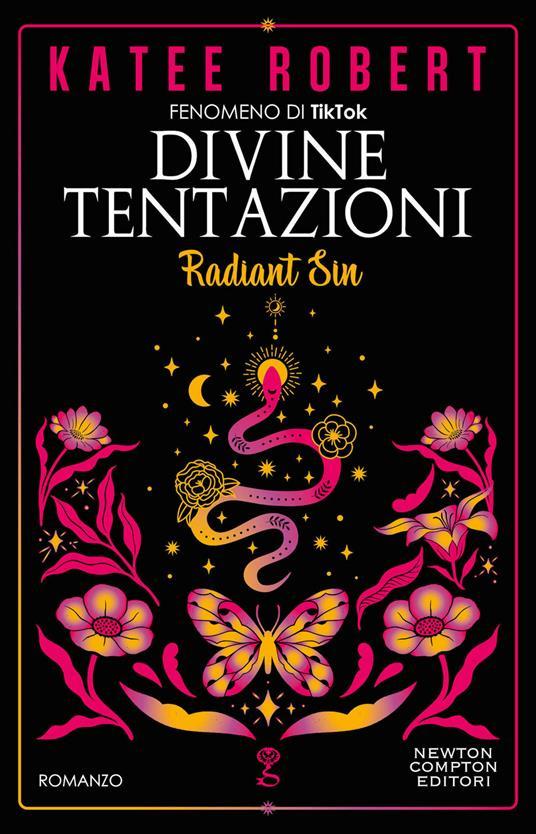
View On WordPress
0 notes
Text
1937-Tukhachevsky Case


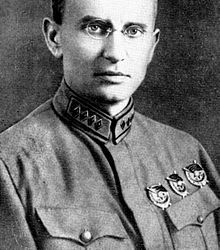
The Case of the Trotskyist Anti-Soviet Military Organization, also known as the Military Case or the Tukhachevsky Case, was a 1937 secret trial of the high command of the Red Army, a part of the Great Purge.

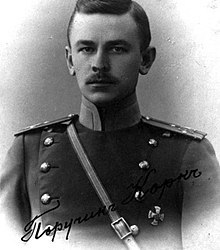


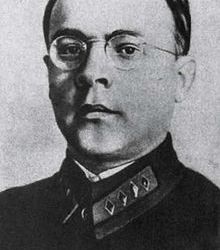

The Case was a secret trial, unlike the Moscow Show Trials. It is traditionally considered one of the key trials of the Great Purge. Marshal Mikhail Tukhachevsky and the senior military officers Iona Yakir, Ieronim Uborevich, Robert Eideman, August Kork, Vitovt Putna, Boris Feldman, and Vitaly Primakov (as well as Yakov Gamarnik, who committed suicide before the investigations began) were accused of anti-Soviet conspiracy and sentenced to death; they were executed on the night of June 11 to 12, 1937, immediately after the verdict delivered by a Special Session (специальное судебное присутствие) of the Supreme Court of the USSR.
0 notes